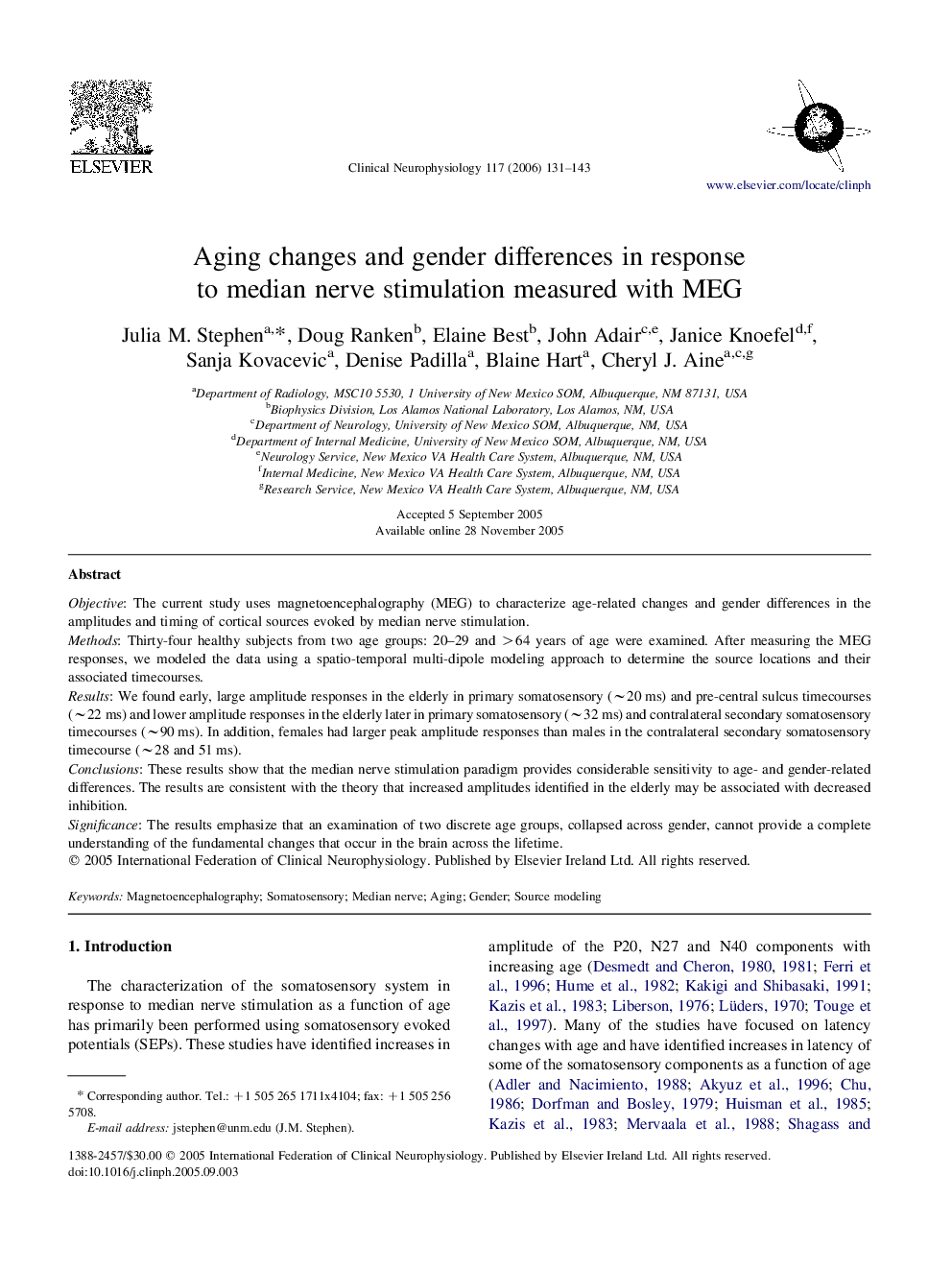| Article ID | Journal | Published Year | Pages | File Type |
|---|---|---|---|---|
| 3048075 | Clinical Neurophysiology | 2006 | 13 Pages |
ObjectiveThe current study uses magnetoencephalography (MEG) to characterize age-related changes and gender differences in the amplitudes and timing of cortical sources evoked by median nerve stimulation.MethodsThirty-four healthy subjects from two age groups: 20–29 and >64 years of age were examined. After measuring the MEG responses, we modeled the data using a spatio-temporal multi-dipole modeling approach to determine the source locations and their associated timecourses.ResultsWe found early, large amplitude responses in the elderly in primary somatosensory (∼20 ms) and pre-central sulcus timecourses (∼22 ms) and lower amplitude responses in the elderly later in primary somatosensory (∼32 ms) and contralateral secondary somatosensory timecourses (∼90 ms). In addition, females had larger peak amplitude responses than males in the contralateral secondary somatosensory timecourse (∼28 and 51 ms).ConclusionsThese results show that the median nerve stimulation paradigm provides considerable sensitivity to age- and gender-related differences. The results are consistent with the theory that increased amplitudes identified in the elderly may be associated with decreased inhibition.SignificanceThe results emphasize that an examination of two discrete age groups, collapsed across gender, cannot provide a complete understanding of the fundamental changes that occur in the brain across the lifetime.
